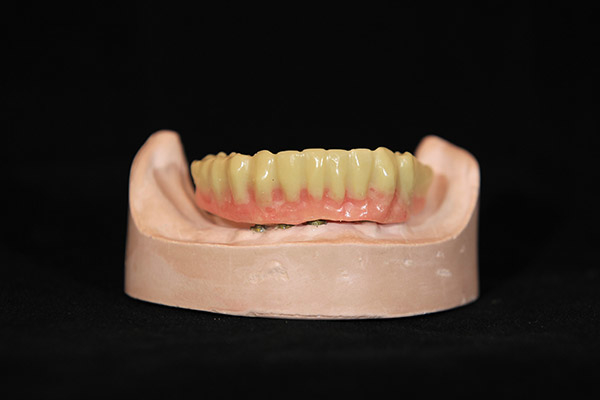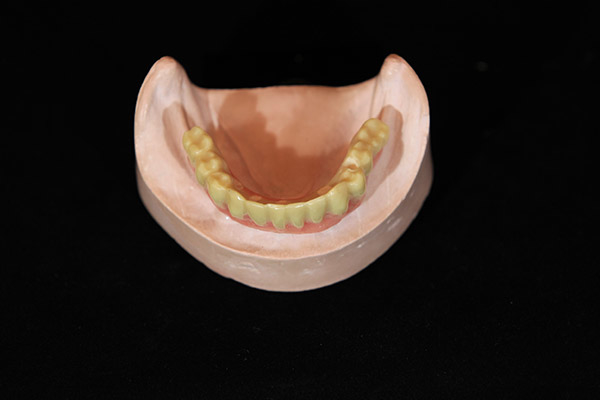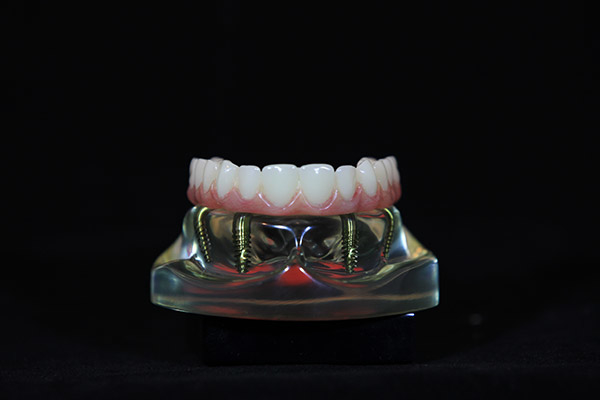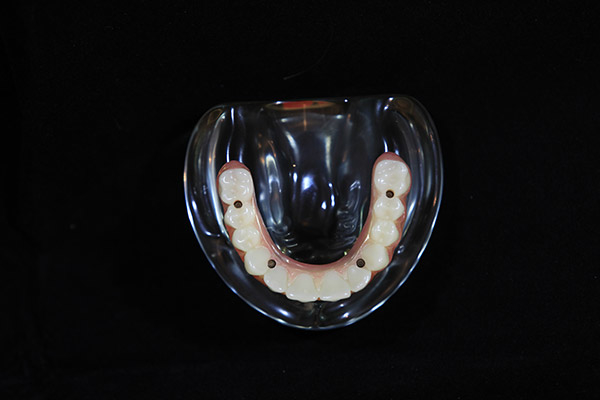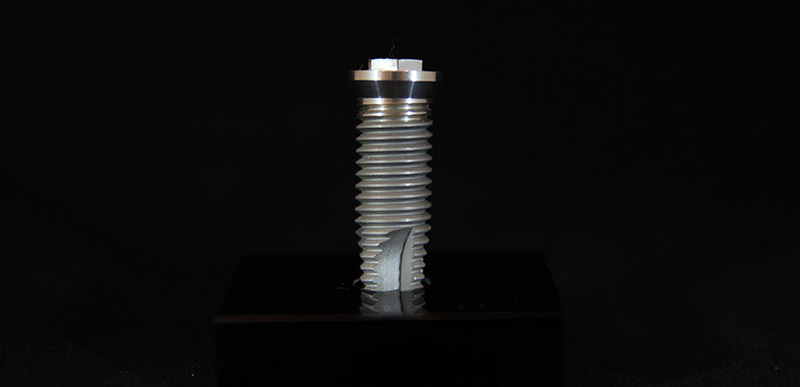
Many patients lose teeth due to injury, tooth decay, and gum and bone infections. Others simply did not have all their teeth grown in. regardless of the reason, missing teeth make eating and speaking challenging. Discomfort and embarrassment from missing teeth is very common. In fact, statistics show that by age 17, more than 7.3 percent of U.S. children have lost one permanent tooth; and by age 50, Americans have lost an average of 12 teeth!
Fortunately, we can help with dental implants. In this era of dentistry, we have more ways to restore dental esthetics and function than any other time in history. Dental implants have been a big part of that revolution. Implants can replace a single tooth, several teeth, or even all the teeth in a patient’s mouth. They look and they even feel like natural teeth. Those who find themselves without teeth for one reason or another can benefit immensely from implants.
What it is:
Dental Implants are specialized posts which are surgically placed into the jawbone to replace missing teeth or to support a denture. The implant functions similar to the root of a natural tooth and depending on the number of implants placed, it can be used to replace everything form a single tooth to a full complement of teeth. It takes an average of 3-6 months for the implant to integrate with the jawbone before it can be used to support a dental restoration.
The most common materials used for dental implants are titanium or a titanium alloy. There are some ceramic implants available for those wishing to have a non-metallic option.
Procedure:
- surgery is used to place implants in the jawbone
- most implant procedures are performed right in the office
- the gum tissue is moved and precise hole is then slowly and gently created into the bone
- the implant is then placed into position using a custom guide
- the incision is then closed
- Abutments are connecting pieces that join the prosthesis (artificial tooth) to the implants
- Abutments may be placed at the same time as implants
- It takes 3 to 4 months for gum tissue to heal around abutments
- The final process is making the prosthesis
- Once the tissue has healed around the abutments, a custom-fit prosthesis (tooth) is then cemented to the abutment
Patient Benefits:
- A missing tooth can be replaced without cutting down the adjacent healthy teeth as is required when placing a bridge.
- Allow Dr. Zaugg an additional restorative to replace missing teeth, even when a bridge is not an option
- Can provide a more secure and stable base for a denture, particularly in the lower jaw
- Helps preserve and maintain healthy jawbone in the area of the missing tooth or teeth
- With proper home care and maintenance, dental implants can restore your smile and chewing ability for a lifetime
Implant Supported Crowns
What it is:
An implant supported crown is a dental restorative solution that replaces a missing tooth by inserting an artificial titanium “root” implant into the jawbone and attaching an artificial tooth to it.
Implant Supported Crowns are usually made of four types of materials:
- Porcelain
- Gold Alloy (commonly gold, platinum, palladium)
- Porcelain fused to an inner core of gold alloy
- Zirconia Metal Oxide
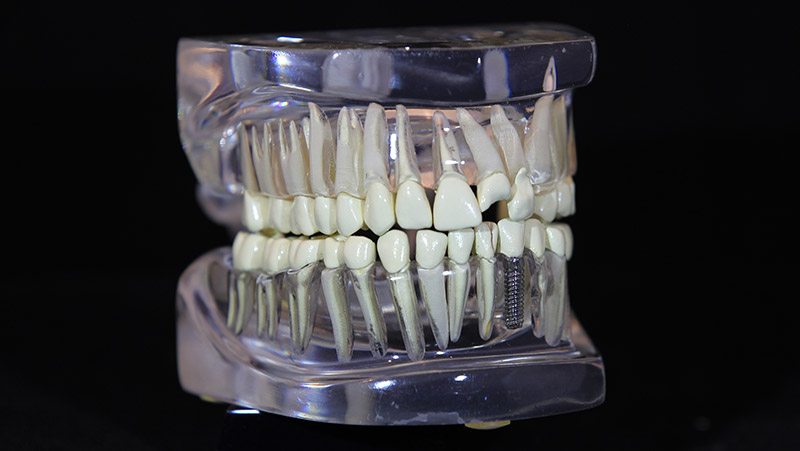
Procedure:
The crown is cemented in place or attached to the implant with a screw and cannot easily be taken out.
Patient Benefits:
- Existing teeth do not need to be adjusted or “cut down” in order to replace the missing teeth as occurs with conventional tooth supported crown.
- Function to restore the natural shape, size and color of your teeth.
- Serve to build back or enhance your smile, help you speak and chew properly, while maintaining good tooth, bite and jaw alinement.
- Prevent remaining teeth from moving out of position.
Implant Supported Bridge
What it is:
An implant supported bridge is a dental restorative solution that replaces missing teeth by placing two or more titanium “root” implants into the jawbone and attaching artificial teeth to them.
Implant Supported Bridges are usually made of four types of materials:
- Porcelain
- Gold Alloy (commonly gold, platinum, palladium)
- Porcelain fused to an inner core of gold alloy
- Zirconia Metal Oxide
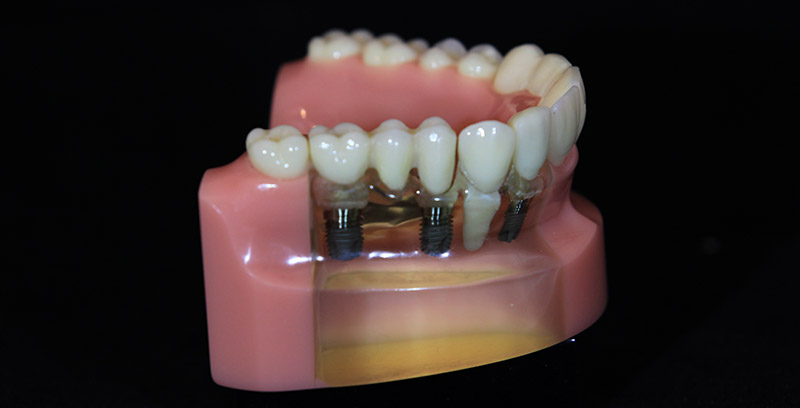
Procedure:
The bridge is then either cemented in place or attached to the implants with screws and cannot easily be taken out.
Patient Benefits:
- Restore the natural shape, size, and color of your teeth
- Serve to build back or enhance your smile, help you speak and chew properly, while maintaining good tooth, bite and jaw alignment
- Prevent remaining teeth from moving out of position
- Existing teeth do not need to be adjusted or “cut down” in order to replace the missing teeth as occurs with conventional tooth supported bridges
- Long gaps or spaces where multiple teeth are missing can be treated effectively with implant supported bridges. In contrast, long span natural tooth supported bridges may have less support and greater flexing of the restoration across the gap, increasing potential bridge failure.
Implant Retained and Implant Supported Prosthesis
Type 1
What it is:
One type of prosthesis uses existing dentures. Dentures often are hard to wear for any people, especially the lower denture with the tongue and muscles of the mouth moving them around. With two implants on the lower, patients can now snap the lower denture on firmly.
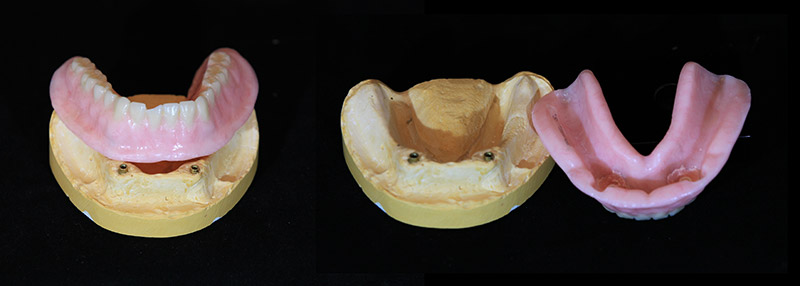
Procedure:
Benefits:
This changes everything for those who struggle with a lower denture moving around and creating sore spots. These implants retain the denture during the day, but can be removed at night to be cleaned.
Type 2
What it is:
Another implant prothesis uses as few as four implants to restore an entire arch of teeth. It is called a hybrid or “all on four” It is very popular because no part of the prosthesis has the ability to move or rub creating sore spots. It stays in the mouth and is not removed at any time by the patient.
Procedure:
Benefits:
Because of having multiple implants, it can preserve the existing bone structure. Those who have this type of implant prosthesis can eat virtually anything resulting in a better diet with fruits, vegetables, and more fiber. Patients also find themselves more confident in their smile and speech.
Implant Patient Consent Form Information Prior to Implant Placement Postoperative Instructions following Implant Placement


